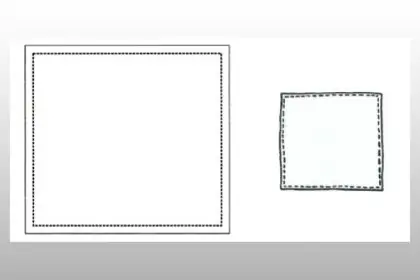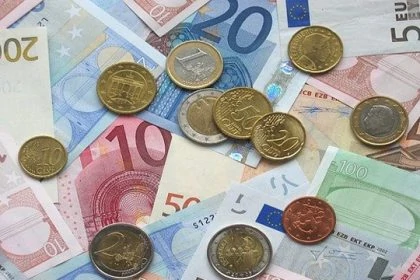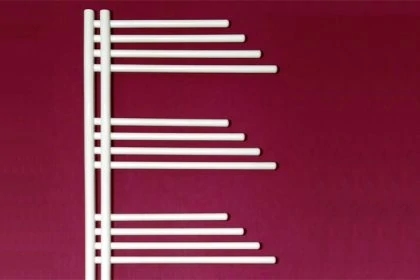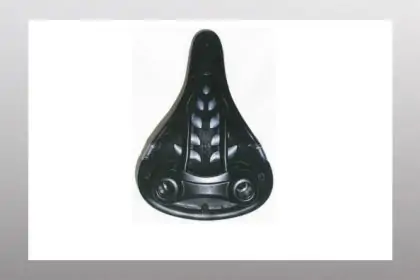A table linen design had been protected as a registered EU design since 2007. But now it was declared invalid: the earlier publication of a rather similar napkin design refuted the peculiarity and individual character. Napkin versus table linen – and the image of the napkin in an antique US spell book (!) prevailed.

The table linen design now declared invalid was registered as a Community design under No. 650627-0003 on 12 January 2007. It was not until almost 10 years later, in February 2016, that the intervener, Nap-Kings, SL (Spain), filed an application for a declaration of invalidity of the table linen design under Article 52 of Regulation No 6/2002.
It claimed that the contested design was not new and also lacked individual character, in particular when compared to the design of a napkin that had appeared in the previously disclosed publication The Classics of Magic by Tom Osborne, Napkin Folding – a book of magic published in the United States.
Ancient spell book refutes novelty and individual character
The Cancellation Division and the Board of Appeal of EUIPO agreed to the application for invalidity with reference to the publication of the very similar napkin in the aforementioned book “The Classics of Magic”. In its reasoning, the Board of Appeal also dealt in detail with the lack of individual character of the table linen design. In doing so, the Board of Appeal stated
- both designs were squares with a border
- the sewn (and not printed or drawn) element of the framed and dotted perimeter would not detract from the similarity between them
- the fact that this sewn element may fulfil a technical function, namely to prevent fraying, would not affect the perception of the two designs, since the border would contextually fulfil an aesthetic or ornamental function, since it would have been possible to choose a different geometric shape
The owner of the contested table linen design challenged this decision before the European Court (CFI). In particular, he claimed that the magic book in question with the image of the napkin could not have been known to the professional circles in the napkin and table linen sector in the Union, unless by chance. Because on Amazon, for example, this magic book was classified in 2016 under the heading “Humour and entertainment books in the sub-category of puzzles and toys” – absolutely far from table linen.
He also held that the existence of a copyright granted in 1945 in relation to this magic book was not sufficient to prove the specific distribution of this book prior to the filing of the design in dispute. An online sale of the magic book via Amazon could only be proven for the time after the registration of the table linen design.
CFI: Folding napkins is in the public domain
However, the CFI rejected his complaint. The court emphasised that in no way can the reverse conclusion be drawn from the availability of a book on Amazon as to whether and when a distribution of that book had taken place, all the more so when one considers the time of the book’s publication (and the grant of copyright under the US Copyright Act of 1909), which was 1945.
Moreover, the author of this magic book had depicted the older napkin design as the most common and well-known way of depicting a napkin and, moreover, the various ways of folding napkins were already in the public domain. Therefore, the claim must be rejected, the CFI ruled, because the professionals in the table linen sector in question could only have become aware of this design by chance.
Border different – optical effect? Technical function?
Finally, the proprietor of the contested tablecloth design identified substantial differences in the representations between the napkin and the table linen. In particular, the fine, successive, almost continuous dots in the contested tablecloth design would, in contrast to the earlier design, create an optical effect of movement and not the visual effect of a quilted seam. The border had an ornamental function separate from its technical function (protection against fraying).
The CFI also rejected these objections. In fact, this border fulfilled at most a dual function, the court found, both a technical and an ornamental one. But these differences, rightly asserted by the plaintiff, were not so pronounced in themselves and taken as a whole that the contested table linen design created a new overall impression on the informed user, the CFI summarised. But this is decisive for determining the individual character of a design: do consumers have a “deja vu” or not?
In any case, the European Court ruled that the representations of the napkin and table linen evoked the same overall impression in the user. The contested Community design ‘Table linen Design’ therefore lacked individual character and was rightly declared invalid.
Do you also want to protect or defend design?
Our lawyers have many years of expertise in design law and trade mark law as well as in the entire field of intellectual property and are entitled to represent you before any court – in Germany and also internationally.

Sources for text and image:







Leave a Reply